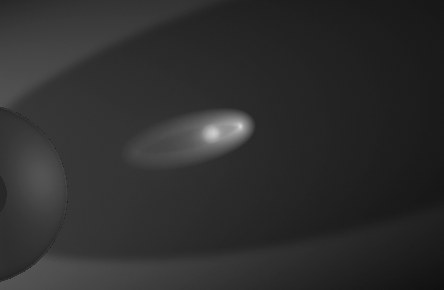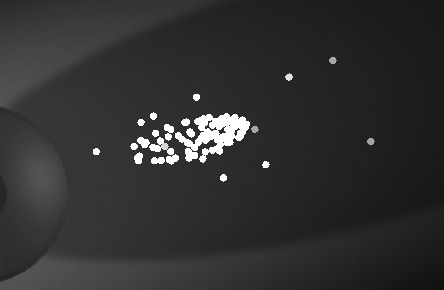Caustics
Details regarding Caustics can be found here.
Enable this option to switch on surface caustics for the active light source.
This defines the total starting energy for the surface caustics photons. The Energy value mainly controls the brightness of the caustics effect. It also influences the maximum number of reflections or refractions for each photon.
 Surface caustics with low Energy (10,000).
Surface caustics with low Energy (10,000).
 Surface caustics with high Energy (20,000).
Surface caustics with high Energy (20,000).
The Photons value affects the accuracy of the caustics effect – increasing the value produces a better result. However, larger values also mean longer render times. The value defines the number of photons that will be used to calculate surface caustics. The best value is usually between 10,000 and 1,000,000 although this depends on factors specific to the scene such as the distance between the light source and the caustics-generating object.
 Example of a low Photons setting – each photon is visible as a point of light.
Example of a low Photons setting – each photon is visible as a point of light.
The render time for caustics depends largely on the number of photons used, so aim to use only as many photons as the effect needs.
Enable this option to switch on volume caustics for the light source.
For volume caustics, ensure the light is volumetric — in the Attribute Manager, on the light's General tab, set Visible Light to Volumetric or Inverse Volumetric.
This defines the total starting energy for all volume caustics photons. It affects the brightness of the effect as well as the maximum number of reflections or refractions for each photon.
 Normal Energy setting.
Normal Energy setting.
 Energy setting too high.
Energy setting too high.
This parameter controls the accuracy of the caustics effect. Increasing the value produces a better effect, but higher values mean longer render times also. The value is the number of photons the light will send out for volume caustics. Depending on the Step Size, a very large number of photon values will be calculated and saved in the photon tree. Suppose your light source sends out 1000 photons and the effect is 100 m long — 5,000 photon states would be calculated and saved in the photon tree. Aim to use as few photons as possible.
Keep in mind that an omni light tends to be more wasteful than other types of light source since it sends out the photons in all directions. The most efficient light for caustics is the spotlight, which enables you to concentrate the beam on the caustics-generating object.
Here, set the falloff for the brightness of the light. You can select from:
- None
- Linear
- Inverse
- Inverse Square
- Inverse Cubic
- Step
See details: Light Object.
See Inner distance.
See Outer Distance.